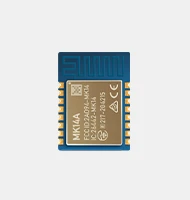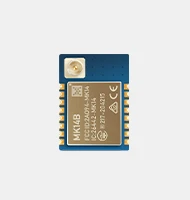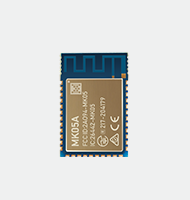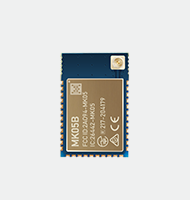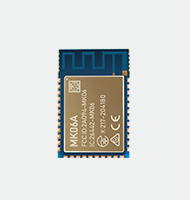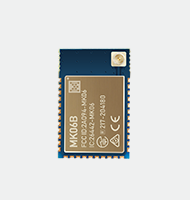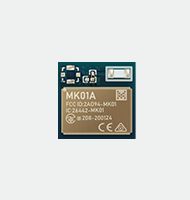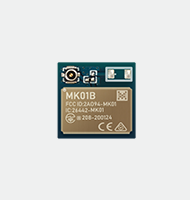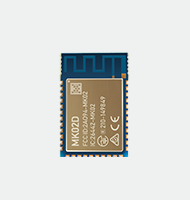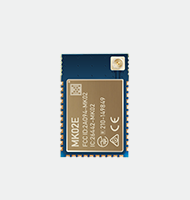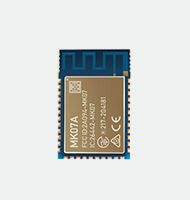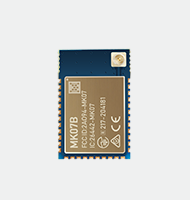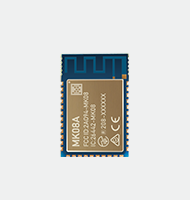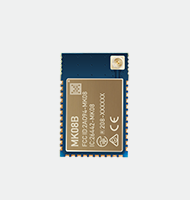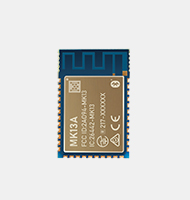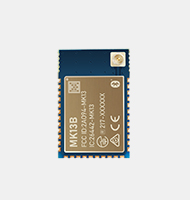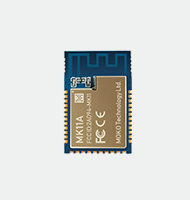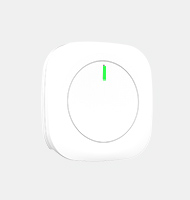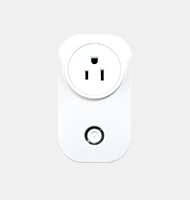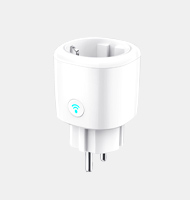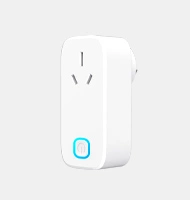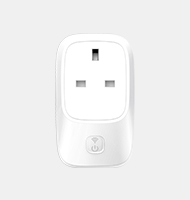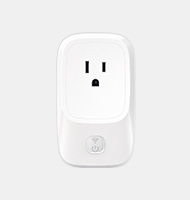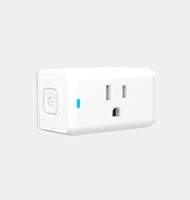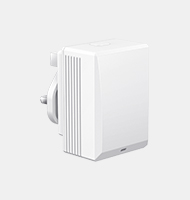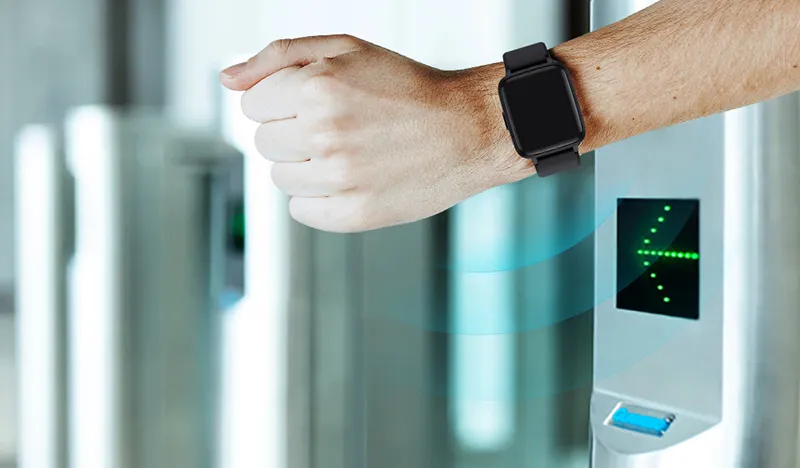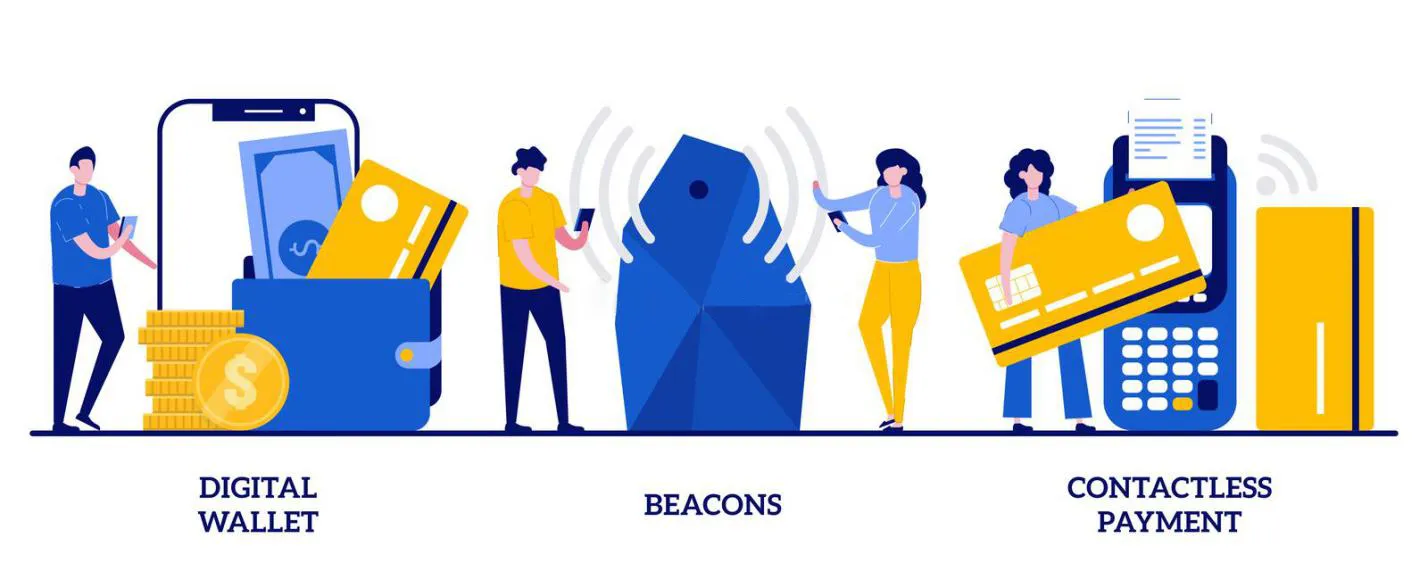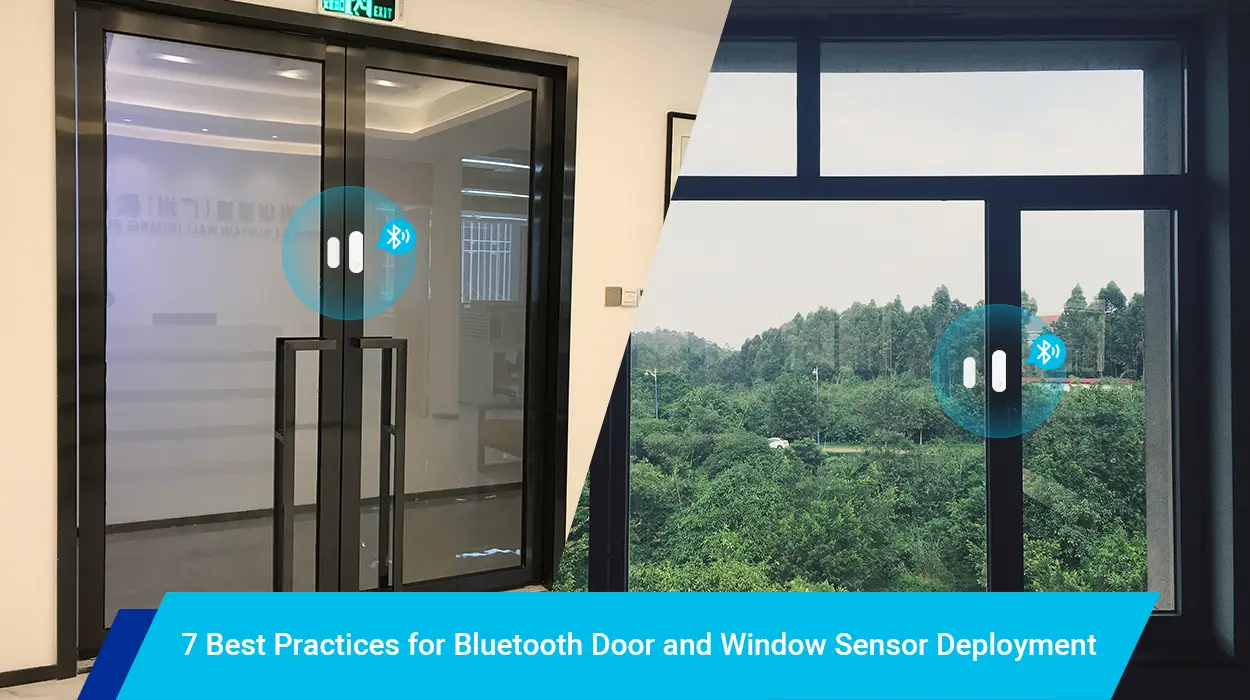Bluetooth beacon technology has been one of the fastest-growing forms of business technology in recent years. Beacon technology solutions are versatile, easy to install, and provide vital data for businesses across multiple sectors.
What Is Beacon Technology?
Beacon technology is the use of small, portable devices to send out a radio signal that can be received by other nearby devices. These wireless beacons are powered by batteries and use Bluetooth Low Energy (BLE) technology to generate the signal. When a device receives the signal, it can be linked with a Cloud server or other data source. The Cloud server then downloads a data packet onto the device. Beacon systems also can be used for location tracking, home automation, and manufacturing efficiency.
The Difference Between BLE and Classic Bluetooth Technology
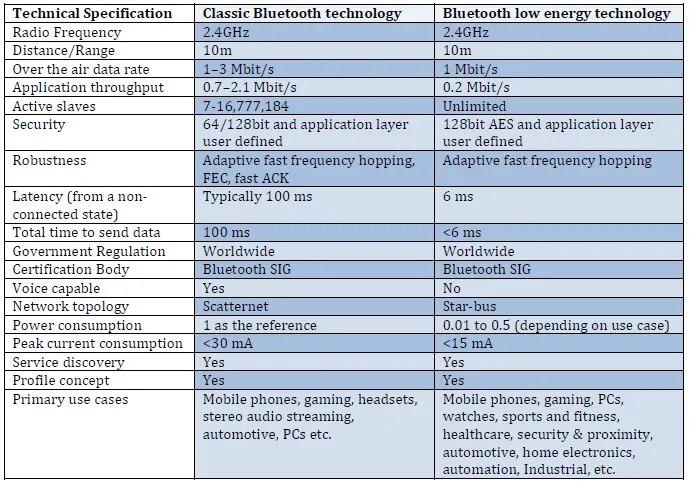
BLE Beacons Signal Duration
BLE beacons are powered by batteries that can last for a relatively long time, even for a number of years. This technology can rely on such a basic power source because it only transmits and receives data on a very limited basis. Devices such as headphones require a constant Bluetooth signal in order to work, which uses more energy. But BLE beacons only perform their function for brief bursts of time. They send out a small broadcast signal at set intervals and only interact with a device when it arrives within the beacon’s signal range, which makes BLE technology more energy efficient.
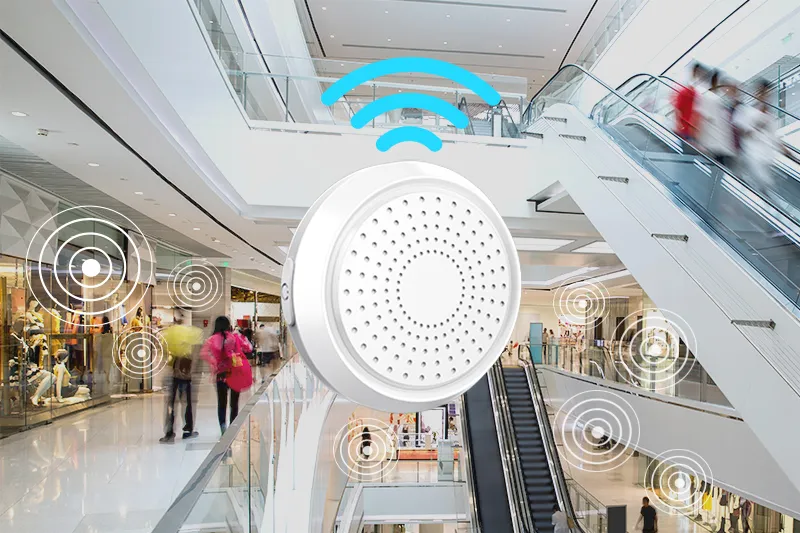
Energy Efficiency
Another factor that gives BLE an advantage over classic Bluetooth is the small amount of data in the BLE signal because the only thing that the beacon broadcasts is a 128-bit ID number, whereas classic Bluetooth exchanges a much greater amount of data between devices, which uses more power. The battery life of BLE beacons can be further extended by using settings to restrict range, lessen the number of broadcast signals per set period of time, or even tell the beacon not to broadcast at all during certain times of the day.
Power Consumption Rates
However, changes in the structure of Bluetooth technology itself also contribute to the lower energy consumption of BLE devices such as beacons. Whereas classic Bluetooth’s power consumption is rated at one watt, Bluetooth Low Energy uses a fraction of that, between 0.01 and 0.5 watts. The current consumption is also different. Classic Bluetooth consumes around thirty milliamps, while low-energy Bluetooth consumes around fifteen.
Beacon Technology Range
Bluetooth Low Energy has a greater range than classic Bluetooth, with a maximum range of more than one hundred meters. This greater range can be of use to those who want to implement beacon BLE technology as part of their business operations.
![]()
How BLE Beacons Work
The function of a BLE beacon is to repeatedly broadcast a short radio signal at a set rate. Bluetooth beacon technology uses forty radio channels running at 2.4 GHz. Each channel is separated by 2 MHz. Three channels are the primary advertisement channels, which are used to send out the broadcast information. For beacons, the broadcast information is the ID number. The other thirty-seven channels are used for actual data transfer between two linked devices.
In order for an exchange of data to occur, a BLE-enabled device must acknowledge the advertising signal from the beacon. For example, a beacon might be set up in a store to track customer movement through the displays. The beacon broadcasts its ID, which is then picked up by a customer’s smartphone that has an app installed that allows the smartphone to interact with the beacon. When the smartphone receives the ID number, it then transmits the ID to a Cloud server. The ID is linked with a specific data packet, which the server then downloads to the customer’s smartphone.
![]()
Setting Up a Bluetooth Beacon System
To employ BLE beacon technology, the user needs to have the following things:
![]()
- The physical beacon itself (hardware)
- Product management software
- End-user mobile apps that allow smart devices to receive beacon broadcasts
- Cloud services and data storage space
- An Application Programming Interface (API)
Beacons Technology for different kinds of uses
With the development of beacon technology, a variety of strange beacons appear in the market to meet various needs. MOKOBlue Bluetooth beacon is a kind of technology product based on market demand.
Indoor navigation by beacon technology
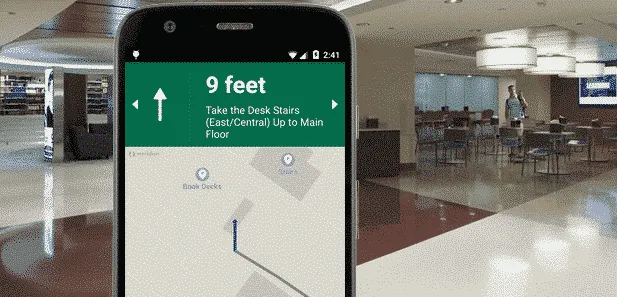
There are different kinds of beacons for different kinds of uses. Navigation beacons or location beacons are small, flat objects that can be attached to a wall or ceiling. Large malls and stadiums have started installing BLE beacon technology in order to provide maps of their facility for their guests to use. These are also often used by retailers to track where their customers go while they’re in the store or to send the customer information about special deals they might be interested in while they are shopping.
Bus schedules notification by beacon technology
Location beacons also are installed by transportation authorities. The beacons can be attached to bus shelters, for example, so that passengers can get schedules and transit maps sent right to their phones.
People tracking by beacon technology
Wearable beacons often are made to look like wristwatches or fitness trackers. The beacon unit goes in the same place the watch face would go, and it has a strap to attach it to the wearer’s wrist. These beacons are used to track where employees might be working at any given time. Hospitals use them to keep track of where doctors and nurses are, in case there’s an emergency and they’re needed right away.
Asset tracking by beacon technology
Asset tracking is another important use for BLE beacon technology. Sticker beacons can be placed onto equipment or goods in order to keep track of where the equipment is within a facility or to keep track of the movement of goods while they are in transit. This use of smart beacons is especially helpful in the logistics and transportation industry, and also in hospitals, which need to know where their valuable life-saving equipment is at all times.
Proximity marketing by beacon technology
Retailers especially have discovered that beacons can both increase their ability to reach customers with advertising and also provide a wealth of data to help them with their marketing strategies. Beacon technology solutions can deliver advertising or other information at the time when it is most relevant—while the customer is there in the store. Further, this marketing information can be tailored to a particular customer’s needs and habits in much the same way as targeted online marketing is.
Data gathering&Analysis by beacon technology
Bluetooth beacon technology can also help retailers understand how their online marketing campaigns are translating into customer visits to and purchases in their brick-and-mortar locations. Here’s how that works: a customer Googles the thing they want to buy, and they click on one of the ad results. This information is stored in the customer’s smartphone. If the customer then goes to the physical store to make the purchase, that information potentially can show the retailer which customers have first shopped online and then gone into the physical store to learn more or to make a purchase.
Automatic check-in by beacon technology
Check-in and registration are time-consuming as there are too many people in-line, but this problem can be easily solved with beacon technology, once you’ve located in the places like office or hospital, exhibition, your ID on your mobile phone or beacon badges will be detected and you will be check-in automatically as your information has already been recorded on the first time.
Contactless payment by beacon technology
With Beacon technology, you needn’t waste time lining for payment as your money will be deducted automatically from your account when you leave the store.
Privacy and Security by beacon technology
Some people might be wary of being tracked by beacons, but it is important to note that the beacons themselves are not collecting any data. The function of the beacon is simply to broadcast its ID number to whichever nearby devices are set to receive that signal. Information transfer happens only when a user’s device sends the ID to a Cloud server that has been set up to send information to the device that received the ID from the beacon. The beacons themselves can’t track anyone’s movements; the translation of a beacon’s signal into a pinpointed location has to be done by the mobile app that interacts with the beacon’s signal.
For a beacon to interact with a device such as a smartphone, an app needs to be installed that allows the device to interact with the beacon. Further, the user of the app has to opt in to allow the device to receive a beacon’s ID and then transmit it to the server where the data is stored. Beacons also cannot be used to connect two devices that happen to be near each other. Those with concerns about beacons interacting with their smartphones can simply turn off Bluetooth or location sensing, making it impossible for a BLE beacon to detect and interact with their device.
Businesses that use beacon technology solutions should be aware that BLE beacons are not immune to security risks. Bluetooth does embed certain security features into every device they make, but businesses using beacon technology solutions should also take reasonable precautions. These include ensuring they have strong authentication processes, beacon ID encryption, and timely security updates to prevent people from gaining unauthorized access to beacon IDs. These kinds of security precautions can prevent bad actors from doing things like spoofing a business’ beacon system to send malicious links to unsuspecting users’ devices.
Features of BLE Beacon Technology
Ease of Use
There are many features of Bluetooth beacon technology that are advantageous. Bluetooth beacon systems are cost-effective and easy to deploy. They require little maintenance and consume little power. Smart beacons are extremely versatile and can be used in a variety of business environments. BLE beacon software frequently can be integrated seamlessly into a business’s existing systems.
Home Automation
Beacon technology is increasingly being used to automate various systems. So-called “smart home” systems use beacons to do things like turn lights on or off when someone enters or leaves a room, adjust thermostats, or control audio-visual equipment. BLE beacons also have important applications for home security systems.
Manufacturing Efficiency and Safety
In manufacturing, beacons can be used to increase plant safety and efficiency. The Wall Street Journal notes that some car manufacturers now use BLE beacon technology to calibrate certain tools. This frees up the human workers to do other tasks, thus streamlining the manufacturing process.
The COVID-19 Pandemic
Smart beacon technology also can be deployed to answer the more widespread needs of society as a whole. Many jurisdictions are now using beacon technology solutions as part of their contact-tracing programs in the fight against COVID-19. Users can download an app that will notify them if they have potentially been exposed to COVID.
The Bluetooth Beacon Technology Market
The first beacon product was unveiled by Apple in 2013. Two years later, Google launched Eddystone, its answer to Apple’s iBeacon. (NB: Google has since deprecated its beacon platform, which will stop functioning on 1 April 2021.) Since that time, businesses have been looking for ways to incorporate beacon technology solutions into their marketing plans and other parts of their operations.
A December 2020 press release by MarketWatch noted that an estimated forty-five percent of retailers had installed beacon technology in 2015, only two years after the first beacon products appeared on the market. Seventy percent of businesses who have installed beacons say that the data collected based on beacon usage has helped them better understand how customers interact with their businesses.
The effectiveness of beacon technology has driven explosive growth in the smart beacon market. Global Marketing Insights predicts that the global smart beacon technology market will be worth in excess of $25 billion by 2024, on a compound annual growth rate of eighty-five to eighty-six percent.
Market research and consulting firm Emergen Research noted that in 2019, retail held the largest share of the Bluetooth beacon technology market. The second-largest sector was the hospitality industry, followed by real estate. Emergen predicts that by 2027, the beacon BLE technology market will have grown exponentially in the retail sector, with significant increases in use by healthcare, banking, and aviation.
Emergen found that in terms of region, the largest share of the market in 2019 was held by North America, at a little over forty-six percent and with a value of $2.10 billion. Emergen attributes this to the adoption of beacon BLE technology by retailers such as Walmart that have a substantial number of stores across a wide geographical area.
According to Emergen, the Asia Pacific region likely will see substantial growth in the smart beacon technology market between now and 2027. Emergen states that both the retail and healthcare sectors are the primary drivers of that growth in the Asia Pacific region.
However, the Bluetooth beacon technology market, like many others, has suffered losses because of the COVID-19 pandemic. Many market observers, including Emergen, MarketWatch, and ResearchDive have noted the effect of lockdowns and disruption of supply chains on the BLE beacon technology market. Despite these disruptions and the ongoing difficulties caused by the pandemic, ResearchDive predicts that the smart beacon technology market will recover by 2022.
Bluetooth Low Energy Connectivity
One advantage of BLE technology is that it allows for a greater number of devices to be connected at the same time than classic Bluetooth did. Classic Bluetooth only allowed seven devices to be connected, but Bluetooth Low Energy technology makes it possible to connect many more than that. The number of devices that can interact at once depends on the devices and how the system has been configured.
Bluetooth has two basic roles that it assigns to devices: central and peripheral. For example, if a store has installed BLE beacon technology, the beacon will be operating as a peripheral device, while the customers’ smartphones are central. This division of roles allows the beacon to interact with multiple smartphones at the same time. Because one beacon can send its ID to several users at once, the mass delivery of the data connected to that ID can be made very efficiently.
Devices Supporting Bluetooth Beacon Technology
All smartphones, tablets, and personal computers made today are BLE-enabled devices. Smartphones running Android 4.3 or higher and iPhone 4 or higher can all interact with BLE beacon technology. This means that virtually any business in virtually any industry can make some use of beacon BLE technology, either to improve customer service and satisfaction or to increase operational efficiency.
BLE technology is also at the core of the Internet of Things. Almost any device made today can have BLE connectivity that allows the device to collect and transmit data. Many readers will already be familiar with smart refrigerators, which can gather information such as expiry dates from the items placed inside them, or with smart ovens, which can be operated remotely from a user’s smartphone.
Smartphones are not needed for some applications, however. Personnel tracking can be done using wearable beacons that interact with location beacons installed on-premises.
As our world becomes more and more connected, businesses need to be on the lookout for ways to create a smooth, value-added experience for their customers and to increase the efficiency of their operations. Nearly every business sector can benefit from smart beacon technology, which can help businesses reach their goals, connect with customers, and deliver their products or service with a high level of efficiency.
Beacon from MOKOblue
There are many beacon technology services available to help businesses get their own beacon systems underway. We at MOKOBblue have a variety of BLE beacon products that can address many different types of uses and business situations, from asset tracking to indoor navigation to the needs of medical facilities. You can head to our product pages to get more information about how beacon technology can help you and your business.
